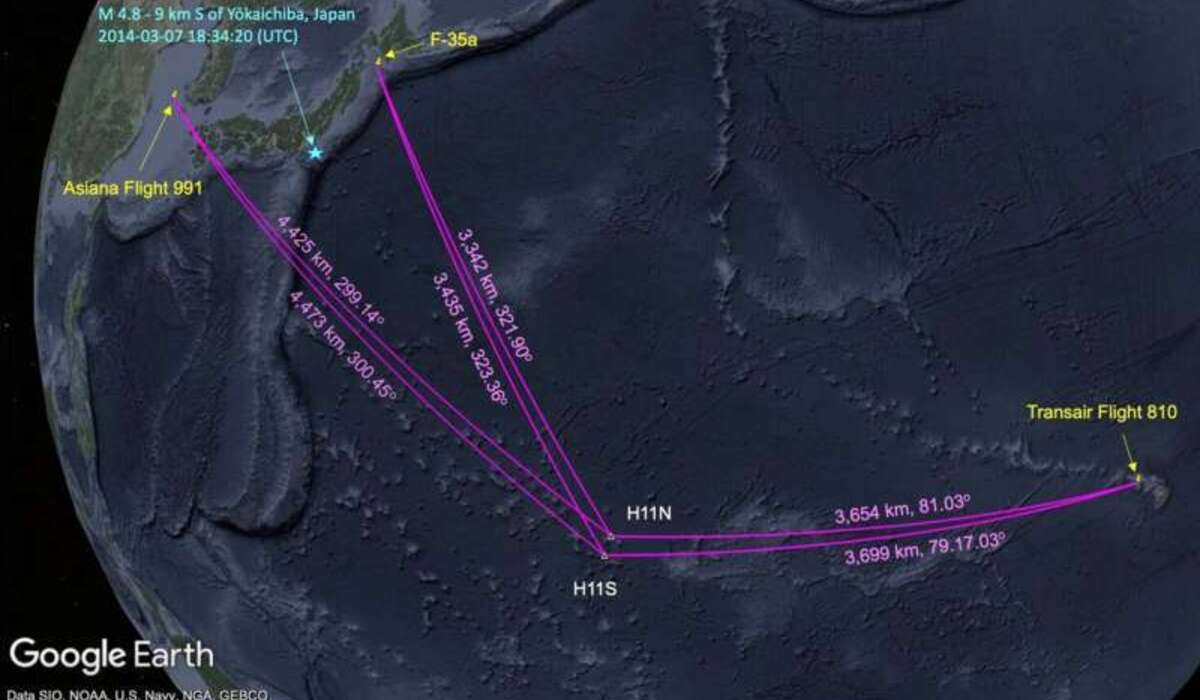Research from Cardiff University suggests that signals captured by underwater microphones, or hydrophones, could be crucial in locating airplanes that crash into the ocean, such as the missing Malaysia Airlines flight MH370. The study analyzed over 100 hours of hydrophone data from ten historical aircraft accidents and one submarine disappearance. These findings, published in Scientific Reports a decade after MH370 vanished, provide new recommendations for investigating the aircraft’s last known location and propose a framework for future incidents.
Ocean impacts from airplane crashes generate distinct acoustic signatures that travel long distances through water, detectable by seabed hydrophones. Dr. Usama Kadri of Cardiff University’s School of Mathematics explains that their analysis identified clear pressure signals from past aircraft crashes, even from over 3,000 kilometers away. Regarding MH370, which is believed to have crashed near the 7th arc (the last communication point with INMARSAT), further analysis is necessary to understand these signals and their implications.
Dr. Usama Kadri, a Reader at Cardiff University’s School of Mathematics, said, “Our analysis shows clear pressure signals from previous aircraft crashes were detected on hydrophones, even at distances exceeding 3,000km. In the case of MH370, official investigations concluded the aircraft must have crashed near the 7th arc—the point at which the last communication between the plane and INMERSAT occurred. Further analysis and future research are therefore necessary to fully comprehend the detected signals and their implications for MH370’s disappearance.”
The study recommends conducting field experiments with controlled explosions or airguns along the 7th arc while monitoring hydroacoustic stations. These experiments, with energy levels similar to MH370’s impact, could provide insights into the aircraft’s location and help develop hydroacoustic technology as a tool for future crash investigations.
Dr. Kadri highlights that similar exercises were performed during the search for the ARA San Juan submarine, demonstrating the feasibility of such an approach. If signals from these experiments correlate with those potentially linked to MH370, it could significantly narrow down the search area. Conversely, unrelated signals might prompt a reassessment of the official search’s timeframe or location.
Dr. Kadri said, “Similar exercises were performed in the search and rescue mission for the ARA San Juan, a submarine that vanished off the coast of Argentina in 2017. This shows us that it is relatively straightforward and feasible and could provide a means to determine the signal’s relevance to MH370, prior to resuming with another extensive search.
“If found to be related, this would significantly narrow down—almost pinpoint—the aircraft’s location. On the other hand, if the signals are found to be unrelated, it would indicate a need for authorities to reassess the timeframe or location established by their official search efforts to date.”
Despite extensive search efforts, MH370 disappeared on March 8, 2014, while flying from Kuala Lumpur to Beijing, leaving no trace of its 239 passengers and crew. This research examined hydrophone data from the final leg of MH370’s journey in the Southern Indian Ocean, particularly near the 7th arc. Additionally, data from the Gulf of Thailand were analyzed for any unusual signals at the time of the last communication.
Dr. Kadri notes that while no definitive signals have been found to initiate a new search, following the study’s recommendations could help determine the relevance of observed signals and potentially uncover MH370’s location.
Dr. Kadri said, “The disappearance of MH370 motivated this work because it raised questions about the detectability of aircraft crashes in the ocean and the potential use of hydroacoustic technology to aid in search and rescue efforts. Unfortunately, we’ve been unable to find a signal with the certainty needed to launch a new search for the missing aircraft.
“However, if the recommendations are followed by the appropriate authorities, we can assess the relevance of the observed signals, potentially shedding light on the location of MH370.”

